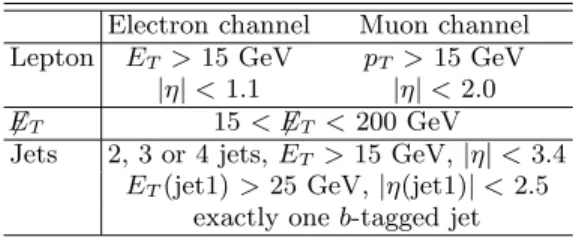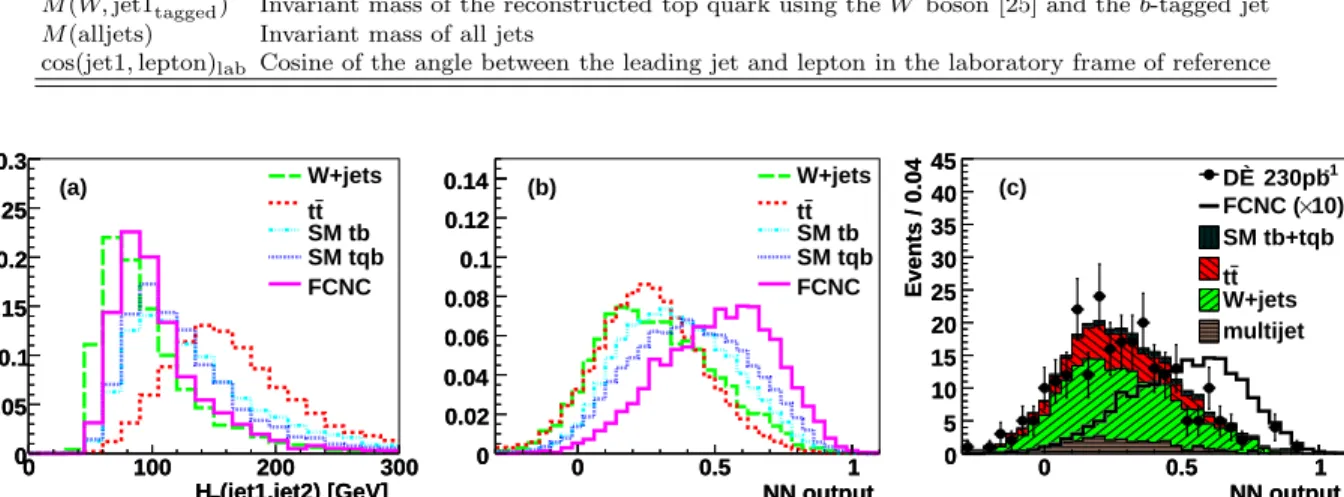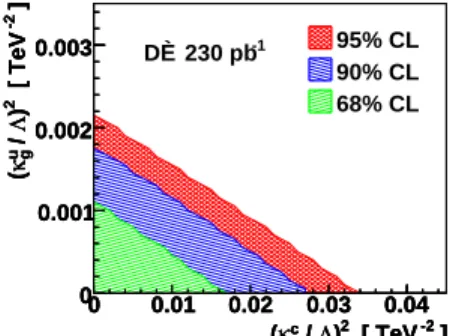Search for production of single top quarks via $tcg$ and $tug$ flavor-changing neutral current couplings
Texte intégral
Figure




Documents relatifs
6 High Energy Physics Division, Argonne National Laboratory, Argonne, IL, United States of America 7 Department of Physics, University of Arizona, Tucson, AZ, United States of
Search for the associated production of a single top quark and a Z or Higgs boson with the CMS experimentM.
The acceptance for single top quark events for these selections is 0.2–0.3% per channel, which should yield ≈ 1 tagged event (tb and tqb, with electron and muon W decays combined)..
Figure 3: (a) distributions of the discriminant variable at √ s = 205 − 207 GeV for data (dots), SM background simulation (shadowed region) and signal (thick line) with
Outputs from the five neural networks used to separate t-channel tqb signal from background in the untagged electron+jets decay channel.. For each plot, the upper curve with error
The search for top quark decays in the leptonic channel is based on the selection of events with high P T leptons and missing transverse momentum described in [8].. Further details
the National Scientific Research Foundation, and National Innovation Office, Hungary; the Department of Atomic Energy and the Department of Science and Technology, India; the
Belgian Fonds de la Recherche Scientifique, and Fonds voor Wetenschappelijk Onderzoek; the Brazilian Funding Agencies (CNPq, CAPES, FAPERJ, and FAPESP); the Bulgarian Ministry